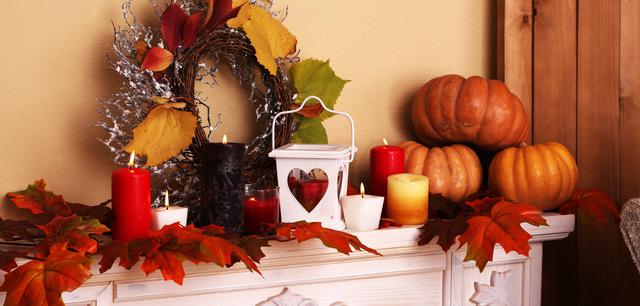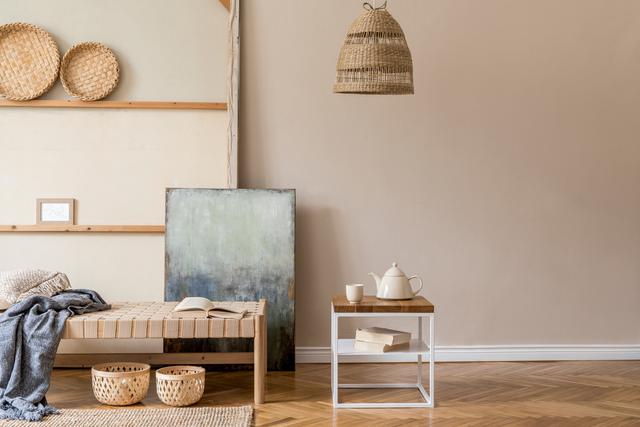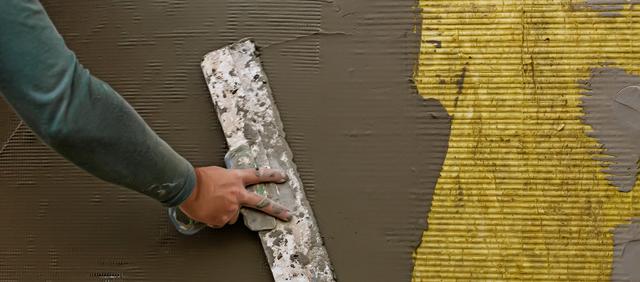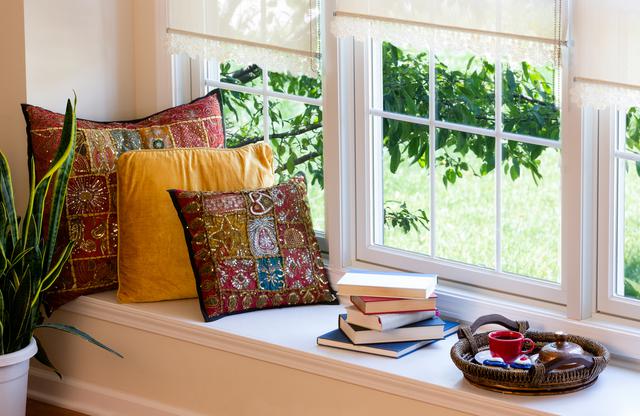Founder of KD Reid Interiors talks inspiration from the 'now' and his journey here
In the world of interior design, there are two qualities that set a designer apart: their ability to fish out the personal style and desires of the client and to balance and maintain their own individual taste and character throughout curated details. An opportunity to speak to an interior designer is a chance to remind ourselves that interior design isn’t just planning, building, matching, and assembly, but that it’s art.
KD Reid is a New York interior design artist and he is alive. That is one of the most prominent feelings you get when listening to him talk about design - an overwhelming sense of excitement towards this form of expression he is so passionate about, which explains why his designs are so beautifully alive as well. For KD Reid, interior design is multi-sensorial storytelling.
KD’s home is in Newark, New Jersey but his day-to-day takes him to the streets of New York; streets that not only keep him busy but also inspire him — between picking up samples here and consulting there, there’s a lot of color, sound, and texture to take in.
But we had KD to ourselves on a snowy morning in New Jersey, and here is what we talked about.
Q. Did you always know you wanted to be an interior designer? When was the moment you realized that’s what you want to do?
“I remember when I was younger, and just looking at design shows on TV. But I think, really, because I grew up in a community area, and just going to different houses and seeing how they lived just really different from me was an inspiration. Like going over to my cousin's house for the first time and thinking “oh wow, they have orange walls!” This is me as a 5-6-year-old starting to grasp those details. A lot of my family has done service work. My mom’s a teacher and my dad’s a social worker, so a lot of that influenced the earlier part of my career. After high school I did attend college, I received a degree in sociology, and did social work for 8 years. It was really, really, really, rewarding but it wasn’t fulfilling to me. And to help balance the anxiety I was feeling about that I started doing internships. I never went to school for interior design, I’m self-taught. I started reaching out and scored my first major interview with Dekar Designs.”
These small introductions into the field brought KD up to a platform where it was impossible for employers not to notice his keen eye for design and his very creative style. His path of growth led to other reputable firms like Mikel Welch, and together these experiences gave KD a grasp on larger scale projects in residential, commercial, and hospitality design, and, most importantly, on the skills to run a sustainable business in the industry. KD seemed to agree that inspirational quotes and affirmations can only get you so far, but key experiences and the right people really do the trick.
“A pivotal thing for me was, seeing someone like Mikel who looked like me, a successful Black interior designer. He gave me a lot of hope and inspiration as far as being successful because you really don’t see too many who look like me in this field.”
Although the adventures that an interior designer is immersed in on a daily basis are quite different from the average person, that HD appreciates the simple beauties in life make him ever so relatable.
Q. What’s your favorite home-cooked meal?
“A nice warm plate of pasta is like my treat. With a movie and wine, on a Sunday, and my phone shut off - that’s my escape.”
Q. Color or texture?
“Texture.”
Q. What does your average weekday look like?
“Currently, I’m a design consultant in this little boutique design store in Chelsea, New York called From the Source. It’s an amazing company that I stumbled across while doing returns from other designers. That’s where a lot of my time goes. The majority of my schedule is stuck between Zoom calls, following up with client presentations, and running out samples. I’m blessed to be working in a competitive area called ‘furniture row’ - there’s 30 to 40 furniture stores in that area. So I always use my lunch break to run out to a store to get samples for a client, pick up something I’ve put on hold, or just go and get creative for projects."
It was fascinating to discover that interior designers often develop just as strong a connection with their creations as with the clients they’re designing them for.
Q. What takes more of your time, laying the backdrop of a setting or room that you’re designing, or deciding what to fill it with?
“I would say the planning stage and just working with the client takes the most time. Because once I have the vision in my head I could go in and execute the design in my head and knock it out with no time. Sometimes I get happy with accessories. I love accessories, you could put them in a room and it could really just bring a flat space together. So I would say editing takes up a lot of my time; making sure the eye has a place to rest, making sure there’s not too much fussy patterns... Don’t get me wrong, I love pattern on pattern on pattern, and texture on texture. But it still has to be cohesive, making sure there is a story being told in the space."
Q. How much do you allow your personality and tastes to shine through in client’s projects?
“Depends on the scope of the project. I never really give someone 100% of my aesthetic because I feel like my personal style is my personal style. What I try to do is really just pull out and develop the client’s style. I make sure we look at what makes up who they are as far as their fashion, their music, their culture and develop their sense of style that they may not realize they had. Instead of trying to impose my particular style and worry about whether they like it or not, it’s about helping them identify and articulate their own.”
KD’s personal style and vision were, however, very tangible in his “Modern Treehouse”, the sitting room terrace he was selected to design for the Kingston Design Showhouse 2020. Soothing blues, textures inspired by the landscape outside near the Hudson River, a console table with plenty of curves, patterns, and lines all come together in his modern design - it is anything but boring but oh-so harmonious. It’s graced with tokens of character and culture you just want to keep looking at.
Q. What is one of the craziest experiences you’ve had with a client?
“I was dealing with a doctor’s office so it was a priority to keep the environment safe and clean because of Covid. But she wanted this massive sectional (sofa) in the waiting area, and it was just humongous! It was beautiful, but the expectations didn’t really match the reality. I’m happy I was able to persuade her to use it in her residential space and opt for cozy individual vinyl chairs that would be easy for maintenance yet people would still get that lounge feel and still respect each other’s space and privacy.
Q. Where does your inspiration come from? What you’ve learned and seen in the past or by looking to the future (contemporary artists/trends)?
“I would say I used to be really inspired by the future. But I’ve recently come to learn the beauty of living in the present. So now I would say I’m really inspired by my day-to-day interactions. Living in New Jersey and traveling on the train every day to New York, I’m inspired by the different groups of people with different fashions, by the music, and new technology. I try to be present in the moment and use that as inspiration. Like, on my daily routine there’s so many routes and paths, and each week I try to change my route. Just this past week I walked through the flower district and I was just so inspired all over again. I’m like, “my visual cues are being connected but now my sensory details are being inspired as well. Just seeing all those different colors I got drawn to a new color palette for a project. Next week I’ll probably walk through the garment district. I try to live in the now, take pictures, and on Sundays, as part of my de-stress thing, sit at my desk, look back on my week’s inspirations, maybe put them in my idea book and they start connecting their own dots and manifest into their own stories.”
Q. What kind of music inspires you in your designs?
“Everything from Nicky Minaj, to Taylor Swift, to The Weeknd. A lot of my influence comes from pop-culture, especially with a lot of the branding that I’m transitioning myself into for the 2021 year. But I’m always trying to listen to different genres for inspiration: music from the 90s — that was a pivotal point in my life and always puts me in a good mood — classic rock, a little soft jazz sometimes...
Q. Would you say there’s anything standing in the way of more diverse collaboration between designers, architects, and builders cross-culturally? And if so, what are those impediments?
“I think that there definitely are a lot of opportunities out there. I think the Black Lives Matter movement kind of catalyzed and brought a lot of things to light; things that people were afraid to speak on or really not sure how to and where to begin to have those conversations. It really starts at the executive level and trickles down from there. There should be diversity from the start, from the top down. Most of the time we just see diversity in the showrooms, or like the lower levels is where we see minorities at the forefront of those companies. But as far as [...] us being at the table in those companies that are making decisions about us and for us, they’re not being made by us. There’s always room for improvement. If you’re not really sure how to begin having these conversations, there are tons of resources like Black Interior Designer’s Network, like the BAD Guild, that can provide you with the tools to help you become a liaison and help bring change in those communities.
Now a few months later I can say that I feel a shift and presence of not only Black people but of different minorities coming to have more recognition. Which makes me hopeful because if it starts in the creative arts community then what other industry is it gonna trickle off into next."
It makes sense that for an artist to thrive they must have an audience. A more equal distribution of visibility of BIPOC artisans and interior designers is necessary for a true representation of what’s out there, and therefore what it’s possible to achieve in our homes and own lives.
Q. What does your average weekend look like?
“I usually work on the weekends but Sunday is my ‘relax’ day. Sunday is all about self-improvement: meditation, maybe unwinding with a glass of wine, a book... so nothing about clients. Mostly family and self-care for me.”






comments